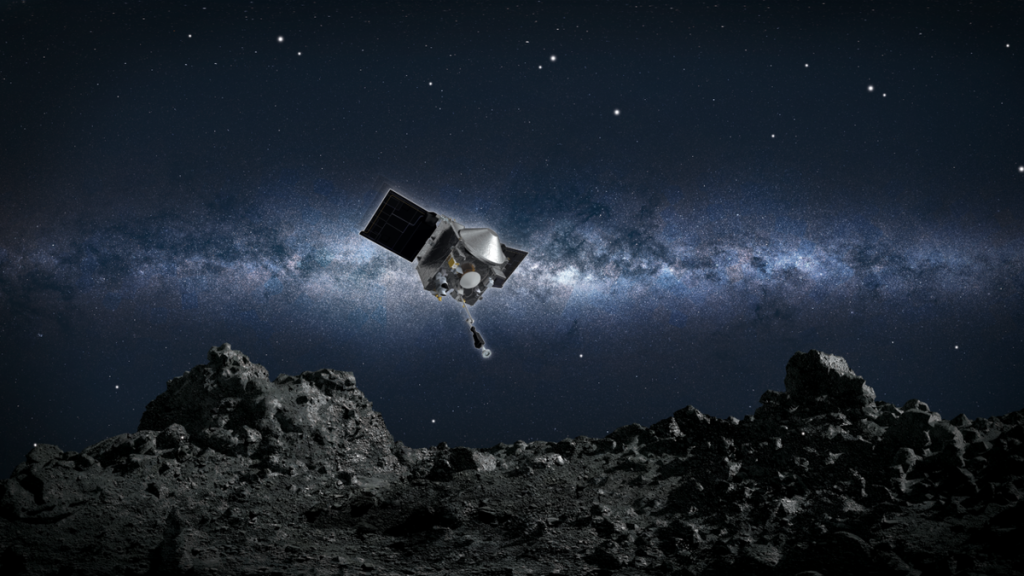NASA spacecraft OSIRIS-REx has successfully dropped-off a sample from an asteroid—and immediately left to check-out another.
The package of an estimated 8.8 ounces (250 grams) of rocks from asteroid Bennu, collected by the probe in late 2021 after a 2016 launch, was successfully dropped-off by OSIRIS-REx as it sped by Earth. The sample landed by parachute on Sunday at 10:52 a.m. EDT in the Utah desert and will be collected by NASA staff.
It was NASA’s first asteroid sample-return mission.
With that seven-year mission complete, however, another begins—and this one could be even more important.
The ‘God Of Chaos’ Beckons
After it deposits the Bennu sample into Earth’s atmosphere it will travel on to asteroid Apophis, arriving in early 2029.
It has been re-named the OSIRIS-Apophis Explorer (or OSIRIS-APEX).
Named after the Egyptian god of chaos, asteroid Apophis is an Aten asteroid about 1,200ft/370 meters wide that orbits the sun every 324 days. It comes close to Earth every decade or so, but was only discovered in 2004. It’s classed as a potentially hazardous asteroid.
Threat To Satellites
OSIRIS-APEX will reach asteroid Apophis before April 13, 2029, when it’s thought that Apophis could come within 19,400 miles (31,200 kilometers) of Earth—within the orbits of Earth’s geostationary satellites. A paper published in 2004 indicated that it could strike Earth on that date, but that has since been ruled out.
However, the Apophis flyby in 2029 is proving to be too tempting a planetary defense opportunity for space agencies.
While orbiting Apophis for 18 months OSIRIS-APEX will approach its surface and fire its thrusters, as it did at Bennu, to expose the asteroid’s sub-surface. Since Apophis will make even closer passes of Earth in 2060 and 2068, NASA wants to know as much as possible about it as far in advance as it can.
Cue RAMSES
The European Space Agency is also considering a mission to Apophis. As detailed in a recent paper, the Rapid Apophis Mission for SEcurity and Safety (RAMSES) mission will reach Apophis before its close encounter with Earth. The latest a low-thrust satellite can be launched is September 2027, though a more powerful spacecraft could go as late as April 2029 just prior to the flyby.
RAMSES would monitor the asteroid as it gets closer to Earth and interacts with its gravity, with possibly devastating consequences to its physical structure and appearance. Knowing more about the internal structure of near-Earth asteroids could prove vital in future is one is headed for earth and needs to be redirected—as successfully demoed by NASA’s Double Asteroid Redirection Test (DART) with asteroid Dimorphos in September 2022.
As it whizzes by—with OSIRIS-APEX and possibly also RAMSES in orbit—Apophis could even be visible to the naked eye.
Wishing you clear skies and wide eyes.
Read the full article here










